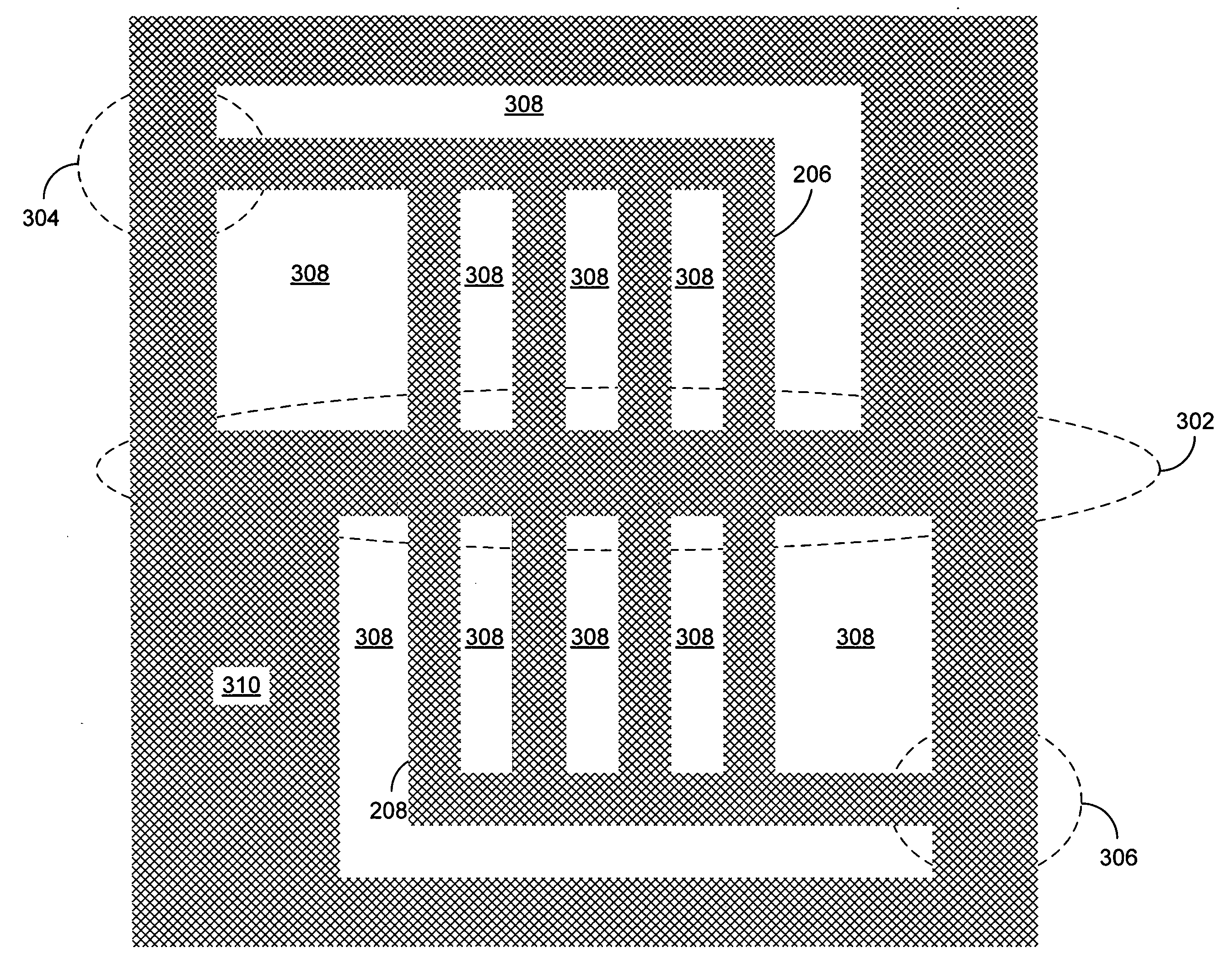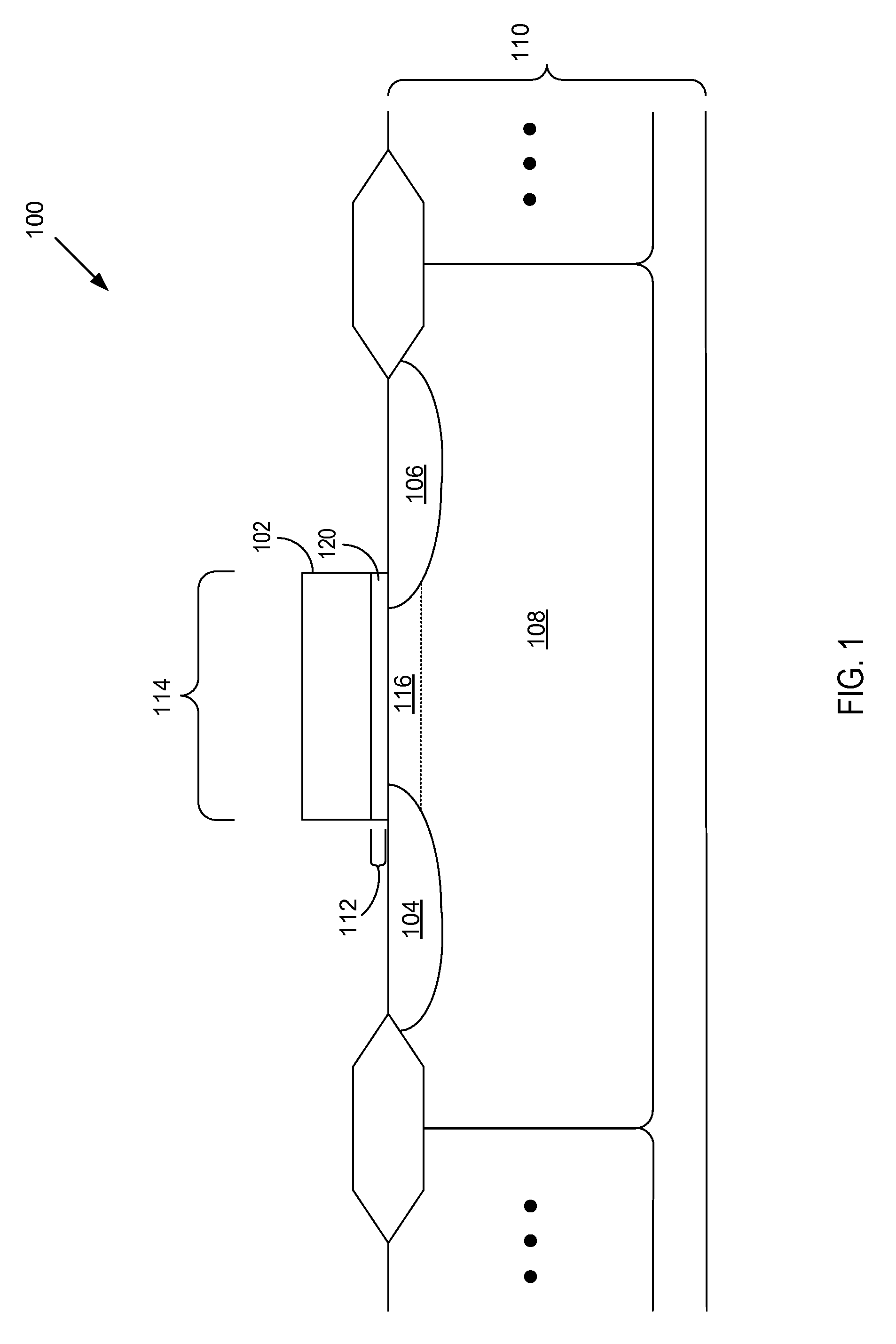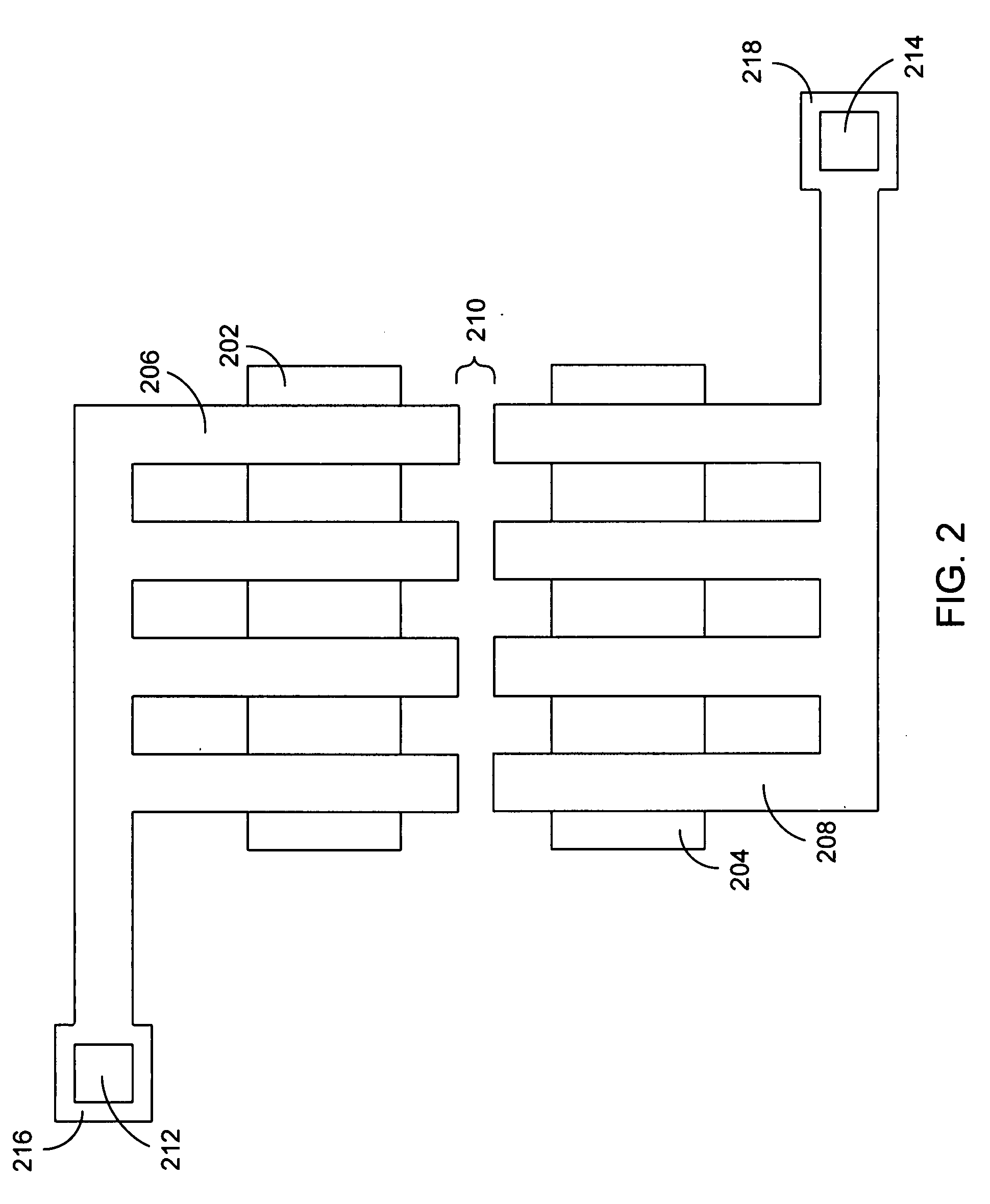Double exposure semiconductor process for improved process margin
- Summary
- Abstract
- Description
- Claims
- Application Information
AI Technical Summary
Benefits of technology
Problems solved by technology
Method used
Image
Examples
Embodiment Construction
[0023]Generally, various embodiments of the present invention provide a double exposure semiconductor process for improved process margin at nanometer feature sizes. In one embodiment of the present invention, a starting material comprising various layers, such as a silicon or germanium substrate, silicon dioxide, polycrystalline silicon (polysilicon), hard mask, and bottom anti-reflective coating (BARC) is formed on a semiconductor wafer (wafer). Next, a photoresist layer is spin-coated on the wafer to produce a uniform, adherent, defect-free, polymeric film of a desired thickness over the entire wafer.
[0024]The wafer is then soft-baked, so as to drive solvent out of the spun-on photoresist and to relieve photoresist film stresses encountered by the spinning process. Next, a first exposure process is used to create an exposed image in the photoresist to define certain device features within the photoresist. A subsequent photoresist development and trimming process is then executed ...
PUM
| Property | Measurement | Unit |
|---|---|---|
| Transmission | aaaaa | aaaaa |
| Width | aaaaa | aaaaa |
| Height | aaaaa | aaaaa |
Abstract
Description
Claims
Application Information
 Login to View More
Login to View More - R&D
- Intellectual Property
- Life Sciences
- Materials
- Tech Scout
- Unparalleled Data Quality
- Higher Quality Content
- 60% Fewer Hallucinations
Browse by: Latest US Patents, China's latest patents, Technical Efficacy Thesaurus, Application Domain, Technology Topic, Popular Technical Reports.
© 2025 PatSnap. All rights reserved.Legal|Privacy policy|Modern Slavery Act Transparency Statement|Sitemap|About US| Contact US: help@patsnap.com



